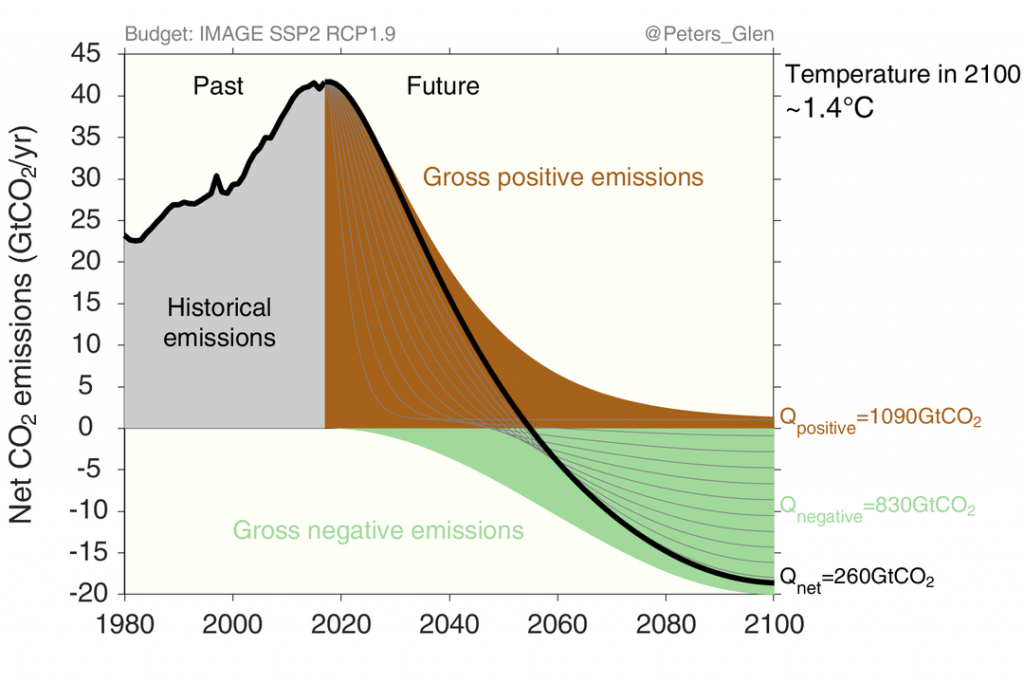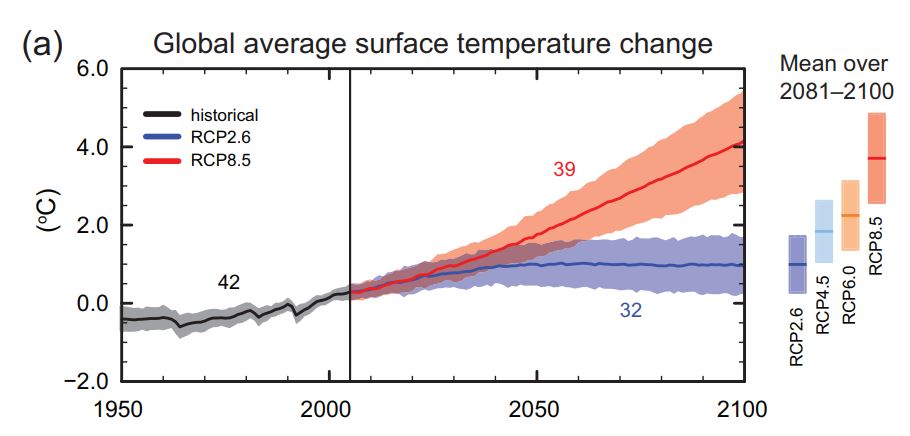If we probably cannot keep global warming within agreed-upon limits by reducing emissions alone, how could we?
Originally posted at Legal Planet.
Next week, the international body responsible for assessing climate change will release a special report on the 1.5°C target, an ambitious, international goal to limit global warming that became part of the Paris Agreement in 2015. The report might mark a significant turning point for how policy makers, the scientific community, and others think about responding to global warming. Yet I also think that it will need to go further. Because there is a lot here that might be new to even faithful readers of Legal Planet, I will go over this in a series of four or so weekly posts.
Since 1990, the Intergovernmental Panel on Climate Change (IPCC) has released five major assessment reports, the most recent in 2014, that represent the global scientific consensus on the causes of, impacts of, and potential responses to climate change. Their tones show a clear trend over the years: as the evidence that our emissions are indeed causing dangerous climate change, our steps to reduce them (“mitigation”) fall shorter and shorter of what’s needed. Meanwhile, (almost) all the world’s countries agreed to three international agreements: the UN Framework Convention on Climate Change (1992), the Kyoto Protocol (1997), and the Paris Agreement (2015).
Two important shifts in global policy and scientific modeling of climate change happened in the late 2000s that form the backdrop of next week’s IPCC special report:
First, until recently, states participating in climate agreements had never specified how much warming they would tolerate, which would imply how aggressive mitigation should be. Some scholars had used an increase of 2°C (3.6°F) of the global average temperature as a sort of useful benchmark. Although this amount of warming does not have any particular threshold implication for impacts, the 2°C target offered a focal point for negotiators. Most countries agreed to it at a UNFCCC meeting in 2009 [PDF], and all did so the following year. Not only did the 2015 Paris Agreement codify this target into a treaty, it called for even more ambition: for also “pursuing efforts to limit the temperature increase to 1.5°C” [Article 2.1(a), PDF].
Second, in the late 2000s, researchers affiliated with the IPCC developed a new set of scenarios to guide policy making [PDF]. With global emissions growing and accumulating through the 2000s, scientists found it almost impossible to construct a scenario in which warming would be expected to stay below 2°C through mitigation alone. Some modelers began to incorporate additional ways to remove carbon dioxide from the air. Although they had long considered reforestation a means of absorbing carbon, these modelers went further by proposing negative emissions technologies. Specifically, these scientists suggested that we could grow certain plants, which remove carbon from the air, for use as biofuels. When we burn these to generate electricity, we could capture and store the resulting carbon dioxide. Through such “bioenergy with carbon capture and storage” (BECCS), almost any warming target could be met, at least in the models.
The IPCC’s resulting set of four scenarios – called the Representative Concentration Pathways – include one that would most likely keep warming to less than 2°C, and one that might, but probably not. These two scenarios, especially the former, assume the rapid expansion and use of BECCS at enormous scales. In fact, the quantities of BECCS in the two scenarios are so great that it is uncertain whether it could actually be done, and if so, what the secondary impacts would be. For example, growing crops for bioenergy would require arable land, which would compete with agriculture and likely push up food prices. What’s more, BECCS is not well-tested, and is presently being undertaken only at a demonstration scale. The 2014 IPCC report came with a warning of uncertainty, challenges, and risks for BECCS – one that was literally in bold letters [page 12, PDF].

It seems that few paid heed to this warning. The IPCC’s press releases did not mention BECCS, only “a wide array of technological measures” [PDF] and “multiple mitigation pathways to achieve the substantial [necessary] emissions reductions” [PDF]. The news media generally did not bring up that negative emissions were almost certainly necessary to stay within 2°C (e.g. 1, 2, 3, but see 4, 5, 6). And it is unclear whether international negotiators were aware or not when they approved in the following year the Paris Agreement, which moved the goalposts to the more ambitious level of 1.5°C (although it does slyly speak of “a balance between anthropogenic emissions by sources and removals by sinks of greenhouse gases” [Article 4.1, PDF]).
In the wake of the Paris Agreement, the leadership of the IPCC agreed to produce three relatively modest special reports prior to its next major assessment report, due to be completed by 2022. The first of the special reports – to be released next week – addresses the 1.5°C target. Because mitigation has continued to be insufficient, meeting this more ambitious target now requires much more BECCS (or other negative emissions technologies) than a 2°C target did back in in the late 2000s.
Therefore, an important question is: Will next week’s IPCC special report on 1.5°C forthrightly confront the fact that staying within this would require the use of negative emissions technologies at enormous – and arguably unfeasible – scales? My next post in the series will answer.

